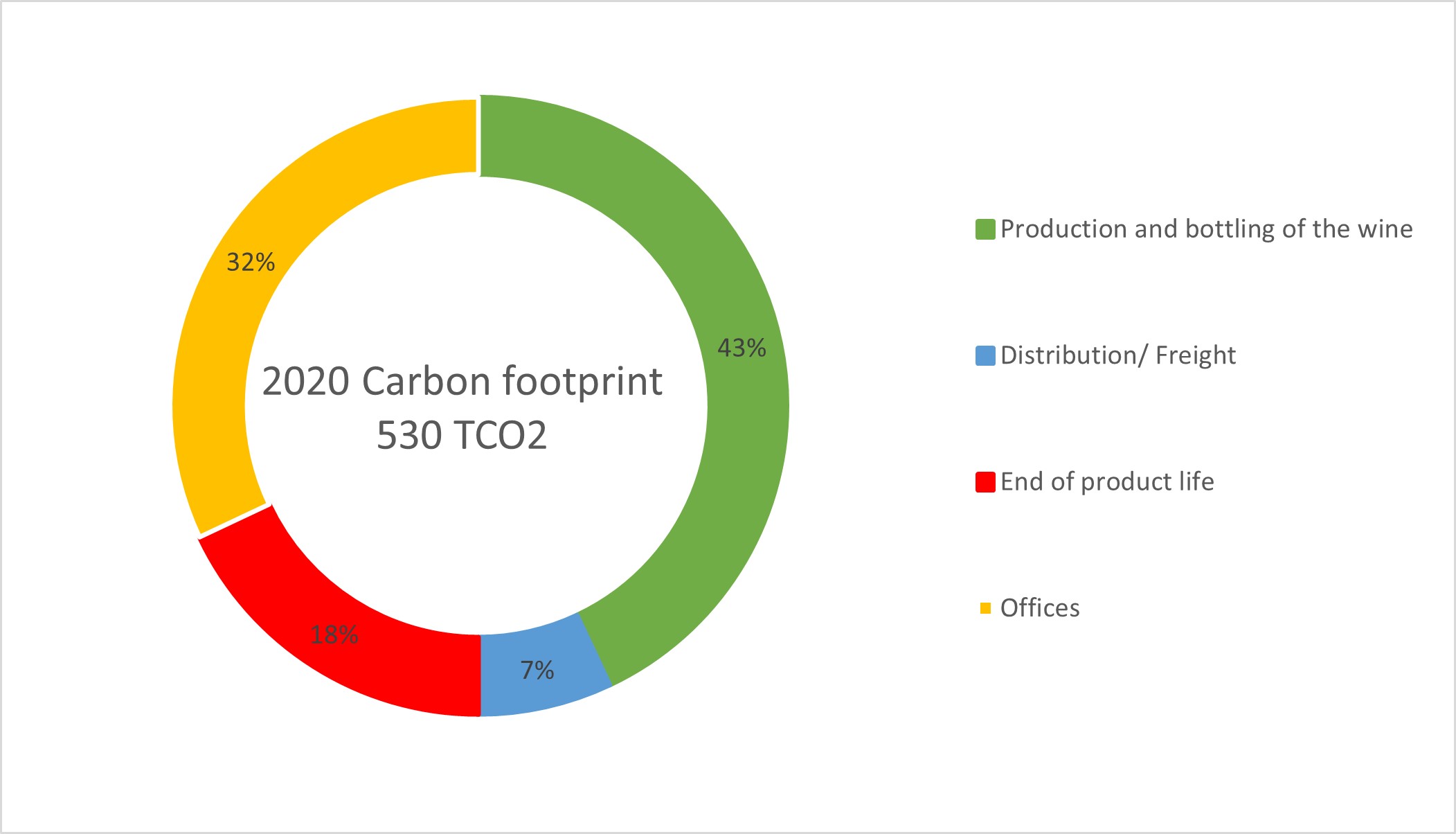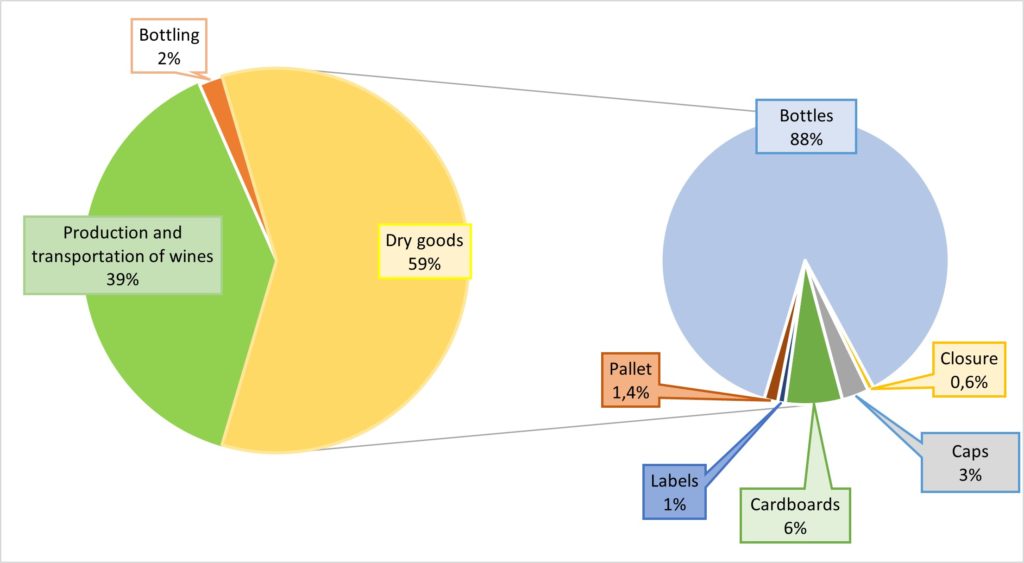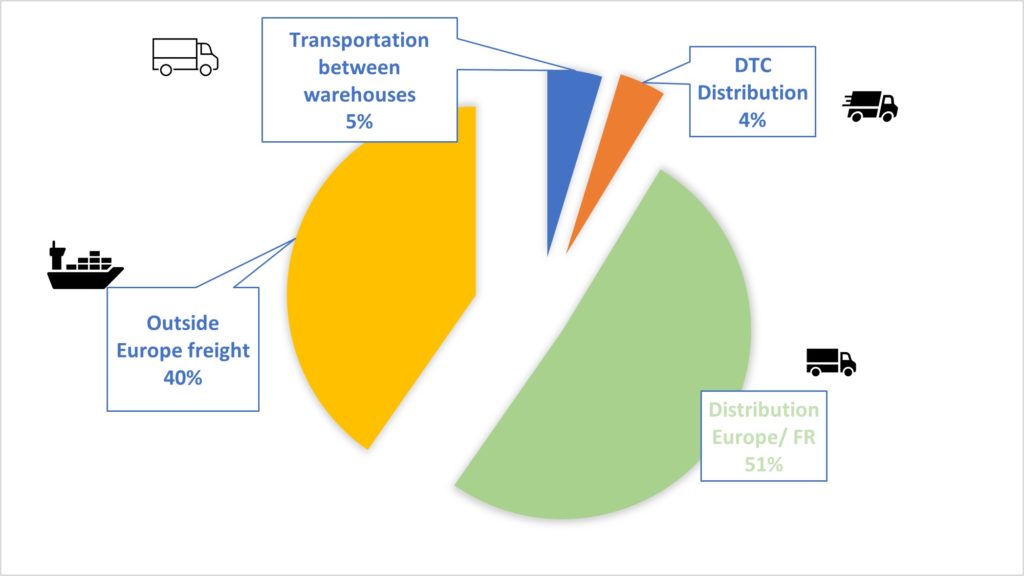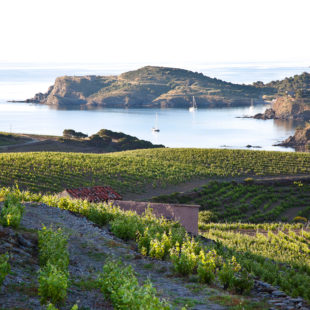Objectives
Vine growing is a perennial, sustainable and non-intensive crop. The plant can produce fruit for over a century if the vines are well cared for.
Nevertheless, wine production, like any economic activity, emits greenhouse gases, and we have a duty to drastically reduce our impact.
We have set ourselves the goal of significantly reducing our emissions at all stages of our production and distribution chain.
Means
The end of life of our products is also integrated into our thinking from the design stage for a more sustainable and circular production. We select dry materials that can be recycled as much as possible: glass, corks from economically and socially responsible forests, recycled paper and cardboard.
We are also developing containers with a smaller carbon footprint: Kegs, BIBs, cans. Even if the solutions are not mature and not yet virtuous, we are exploring with various partners the possibilities of reusing bottles and a deposit return scheme. Glass alone will account for 40% of our total carbon footprint in 2020 if we include the end of life. We have been continuing to reduce the average weight of our bottles year after year. In 7 years, we have lightened the bottle of our Languedoc Bio by 29% by integrating more and more recycled glass.
Carbon Footprint Scope 3
Year 2020
Total CO2 émises emissions for Hecht & Bannier’s activity for the year 2020 : 530 tonnes
(for business travel, 2019 was the year analysed so that the limitation of travel in 2020 would not distort the data)

Hecht & Bannier total CO2 emissions in scopes 1, 2 and 3
1. Production and bottling : 43% of our total emissions
- Raw materials for wine production and packaging. This includes emissions from the cultivation of the vineyard and the production of the grapes/wine subsequently purchased by Hecht & Bannier.
- Organic wines : their carbon impact is greater than that of conventional wines because they require more work in the vineyard usually for a lower yield.
- Dry materials and packaging : glass is by far the largest emitter, as glass manufacture is highly CO2 intensive.

Wine production and dry goods emissions
2. Offices and company operations : 32% of our Total emissions
- Logistical costs : storage costs, sample shipments, transport
- Commercial costs : hotels and restaurants, remuneration of sales agents, trade fairs
- Support functions : consultancy, banks, IT
3. End of product life : 18% of our Total emissions
The end-of-life phase includes all the waste remaining once the wine has been consumed. The end-of-life of the glass represents almost all of the carbon emissions of the overall product.
Including production and end of life, glass represents 40% of Hecht & Bannier’s total CO2 emissions.
Today, glass recycling is still a very carbon-intensive process, so much so that the carbon emission factor is five times higher for a recycled bottle than for a discarded bottle.
Consequently our carbon footprint is and will be indirectly impacted depending on the recycling rate in the country where the bottles are consumed. Glass is now 75% recycled in France compared to 31% in the USA for example, so the more bottles we sell in a country with a high recycling rate like France, the more our carbon footprint increases.
4. Distribution and Freight of finished products : 7% of our Total emissions

Freight and distribution emissions for finished goods
We do not use air freight for sales of our goods. Emissions from wines shipped by sea or road freight are proportional to sales. The impact per bottle decreases as the volumes shipped increase.
Conversely, deliveries of very small quantities for a restaurant or a private customer have the greatest impact. Going to a collection point, increasing volumes, grouping orders means reducing emissions per bottle.

